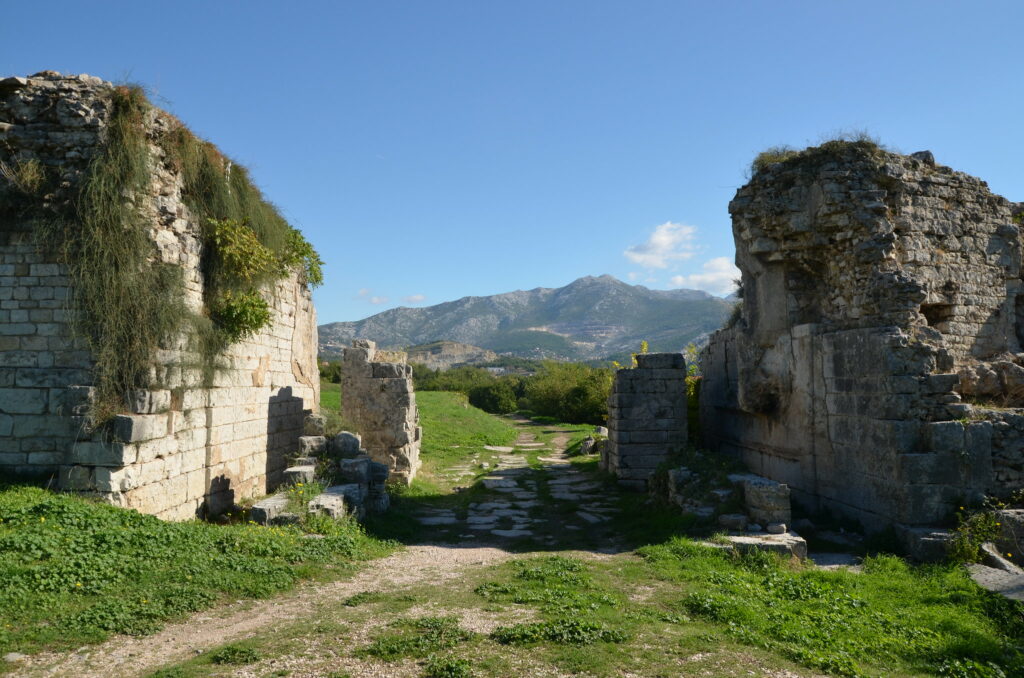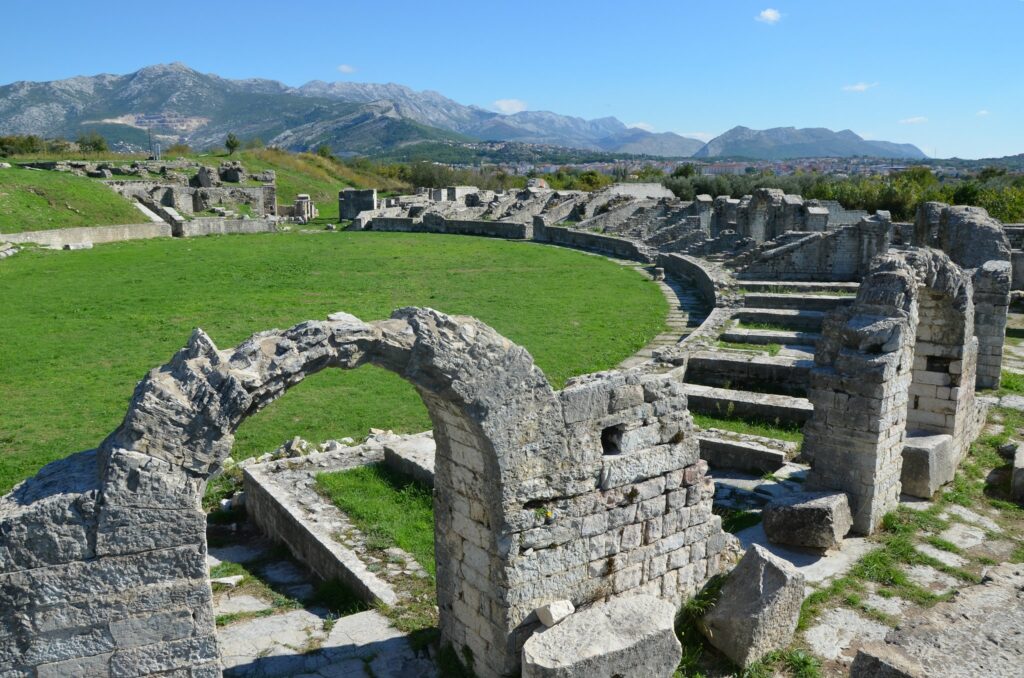An Introduction to Salona and Spalatum (Split)
In around the 3rd to the 2nd century BCE, Greek colonists founded a small town on the Dalmatian coast named Aspálathos (Ἀσπάλαθος). We know the town today as Split, Croatia. Together with the nearby Roman city of Salona, the settling of this small town would shape the landscape and history of this region for millennia to come.
There is so much to say about these cities and the surrounding region, but here we will limit ourselves to a short introduction and share a selection of photos. In future articles, we will provide a short guide to Split, focus in on Diocletian’s Palace and invite you to discover a couple of the most beautiful island towns of Croatia as well as Croatian food and wine. It is not surprising that wherever the Greeks (and later the Romans) went, they brought with them the cultivation of olives and grapes! We hope you enjoy this first in our series on Dalmatia.
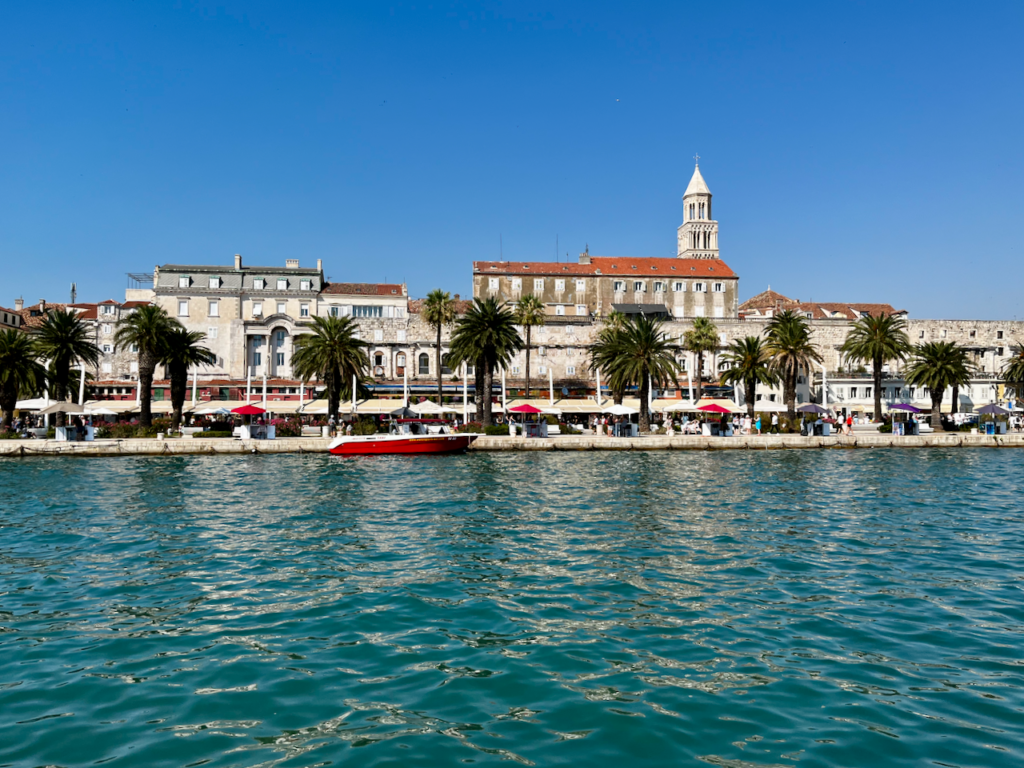
At the top of this page is part of George Niemann’s recording of how the southern (seaward) wall of Diocletian’s Palace appeared in 1906. If you look closely in the picture just above, you can retrace the lines of the wall behind the palm trees. Originally, the walls descended directly into the sea. Below you can see how the wall looked in the 18th century (engraving after Charles-Louis Clérisseau).
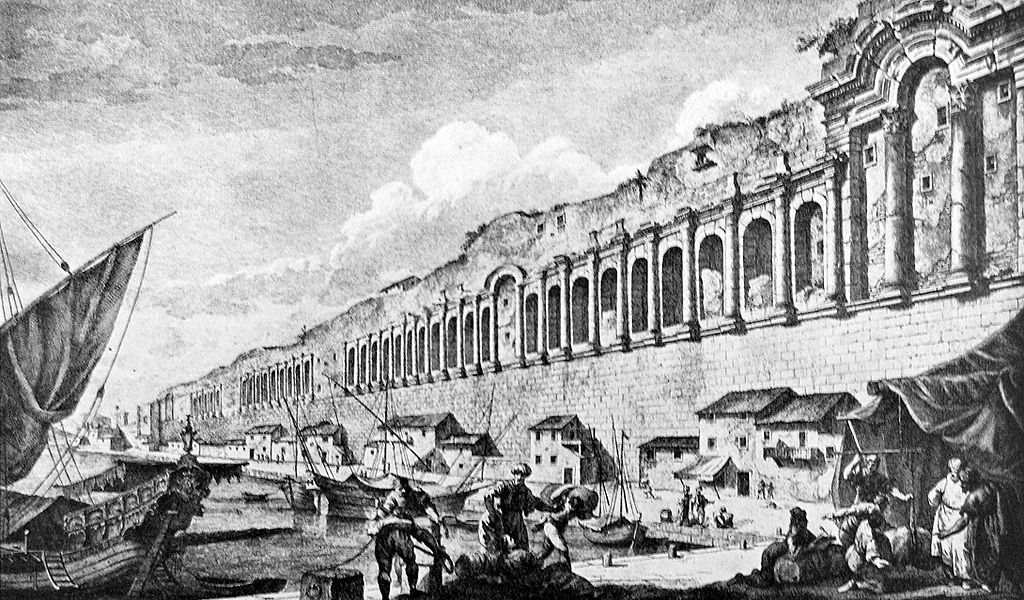
In previous centuries (from the 8th to the 6th centuries BCE), Greeks left their home towns for a variety of reasons and founded new city-states (apoikiai) or trade centres (emporia) around the Mediterranean basin and into the Black Sea. Split is not very far from Greece, but the colonists did not come directly from Greece.
Instead, it is a perfect illustration of the different waves of Greek colonisation that occurred over many centuries. In around 734 BCE colonists from Corinth founded Syracuse in modern-day Sicily. In the 4th century colonists from Syracuse founded Issa (modern-day Vis) in the Adriatic Sea. As the city became important in its own right, it began to mint its own coins and found its own colonies: including Aspalathos/Split…
While Split was at one time a Greek town, what we see today shows the much more dramatic architecture of Diocletian’s Palace and the later Venetian architecture as well as layers of other architectural development, witnesses to the complex history of this city and region.
To understand the development of Split in its current form, we have to turn to the nearby city of Salona, today in ruins. Its origins go back to the 3rd century BCE but owe its success and development to their decision to support Julius Caesar in the latter’s civil war against Pompey. As a result, it became the capital of the Roman Province of Dalmatia.
The future emperor Diocletian was born here and near the end of his reign, he decided to build a palace for himself not far away, at Aspalathos. Much more than a simple palace, the structure was much more of a fortified city. When in the 7th century the Avars and Slavs invaded the region and destroyed Salona, the refugees took to the sea and, for a while, lived in huts on the islands, until some had the idea to return to the mainland and inhabit the Palace of Diocletian (much easier to defend given its massive fortifications).
Conflict ensued with the Croat Slavs, but the Empire (now entirely centred at Constantinople) intervened and issued an imperial mandate, recognising the city of Spalatum. When the Byzantine Empire fell, the city passed under the control of the Kingdom of Croatia and then the Republic of Venice, the Austrian Empire, the Kingdom of Italy, France (Illyrian Provinces), Yugoslavia and, as of 1991, Croatia (to summarise the history a bit hastily).
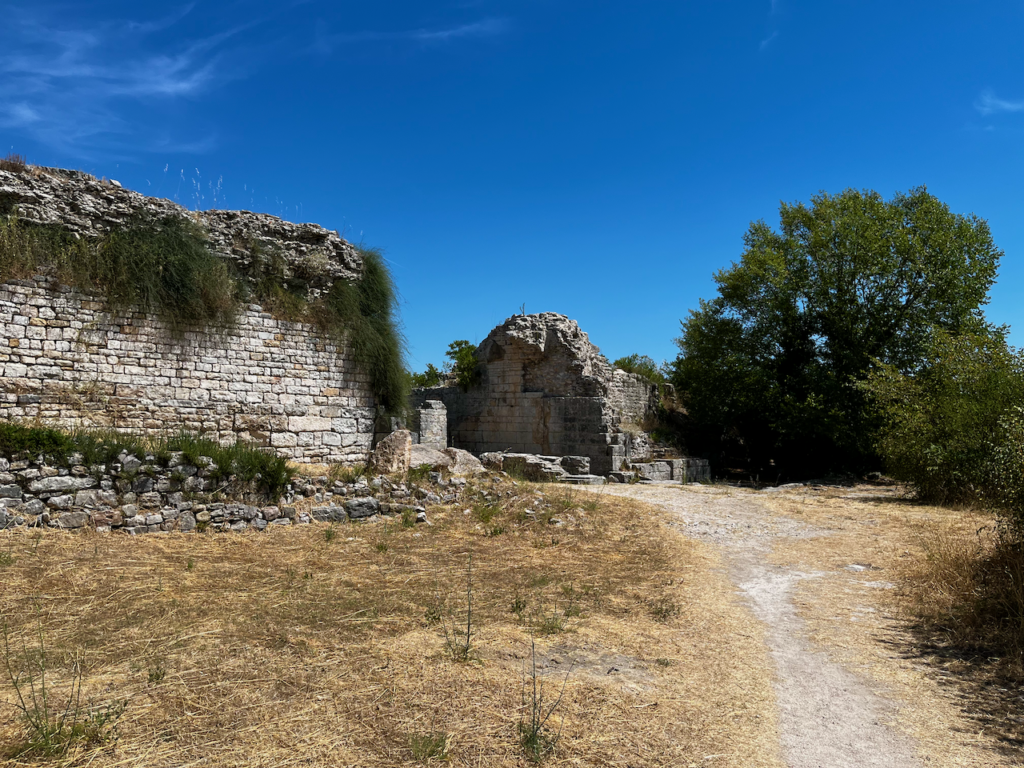
Visiting the archaeological site of Salona has a tinge of adventure in that actually finding the entrance with Google Maps was a bit challenging when this author visited in 2022. Once in, one is also able to wander about relatively freely around the ruins (there is a small building part way in where you can pay the modest entrance fee first). The above photo was taken in July 2022, whereas the one below (taken by Carole Raddato) was taken sometime in 2013. We offer them both to illustrate the different levels of greenery that you may encounter there.
One of the most stunning part of the ruins is the Amphitheatre. When the Aravs destroyed the city, they apparently destroyed everything so that only the amphitheatre remained standing, according to the 13th-century Historia Salonitanorum atque Spalatinorum pontificum (‘History of the Bishops of Salona and Split’). It is in ruins today, but it is impressive to be able to explore it.
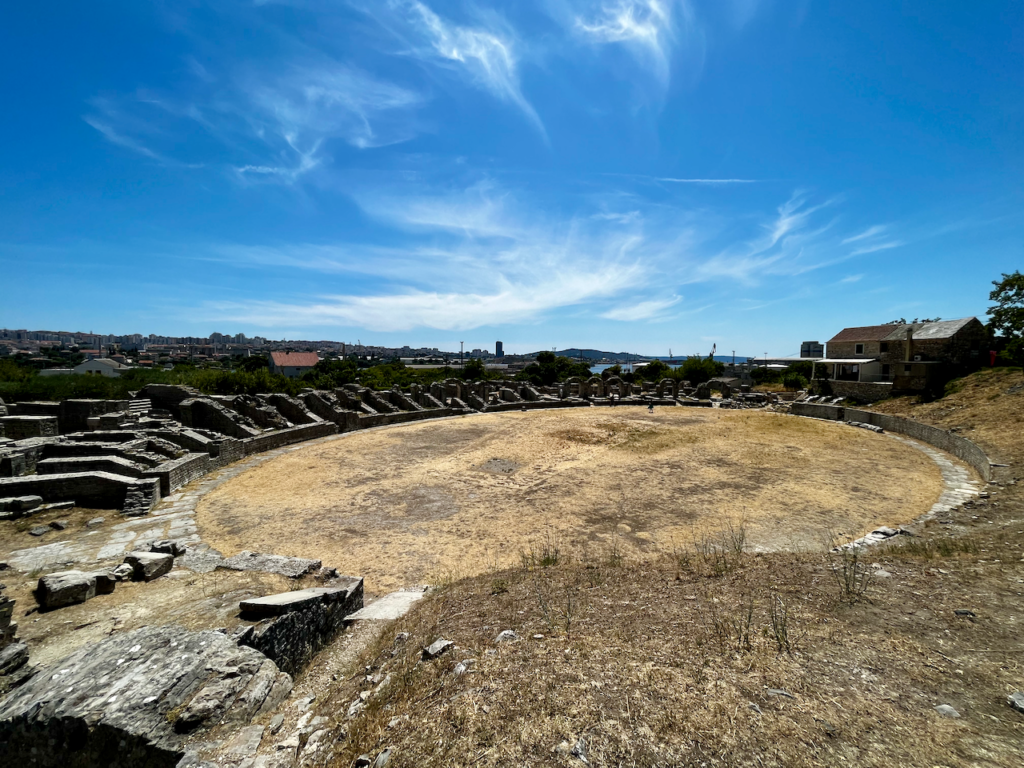
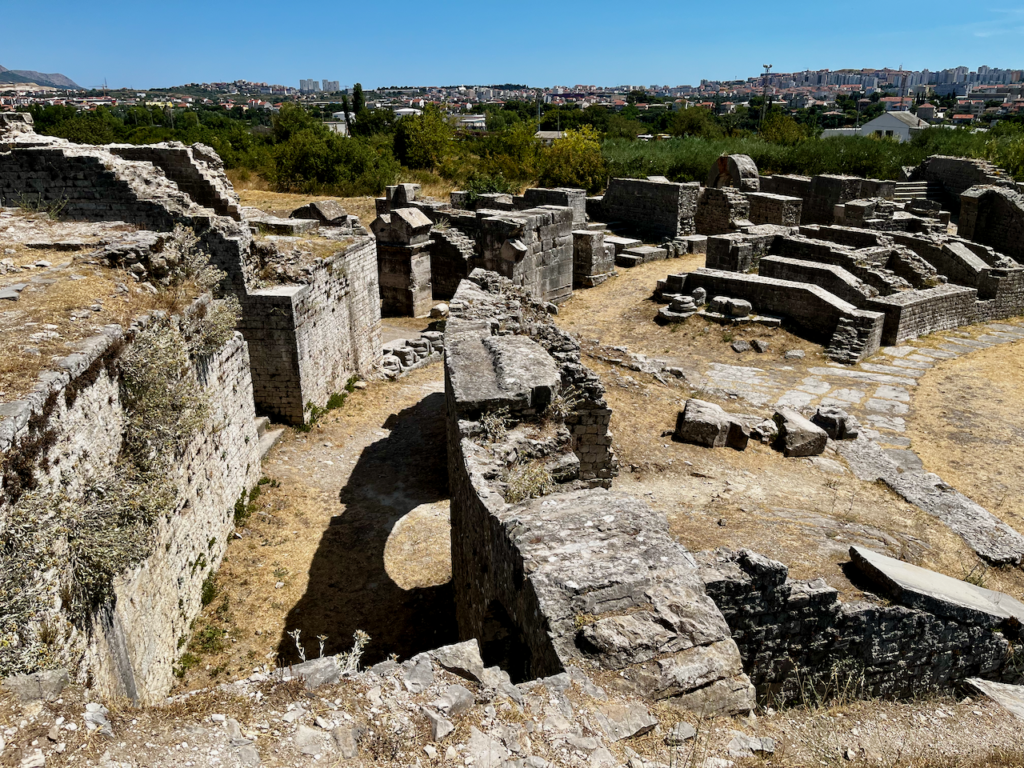
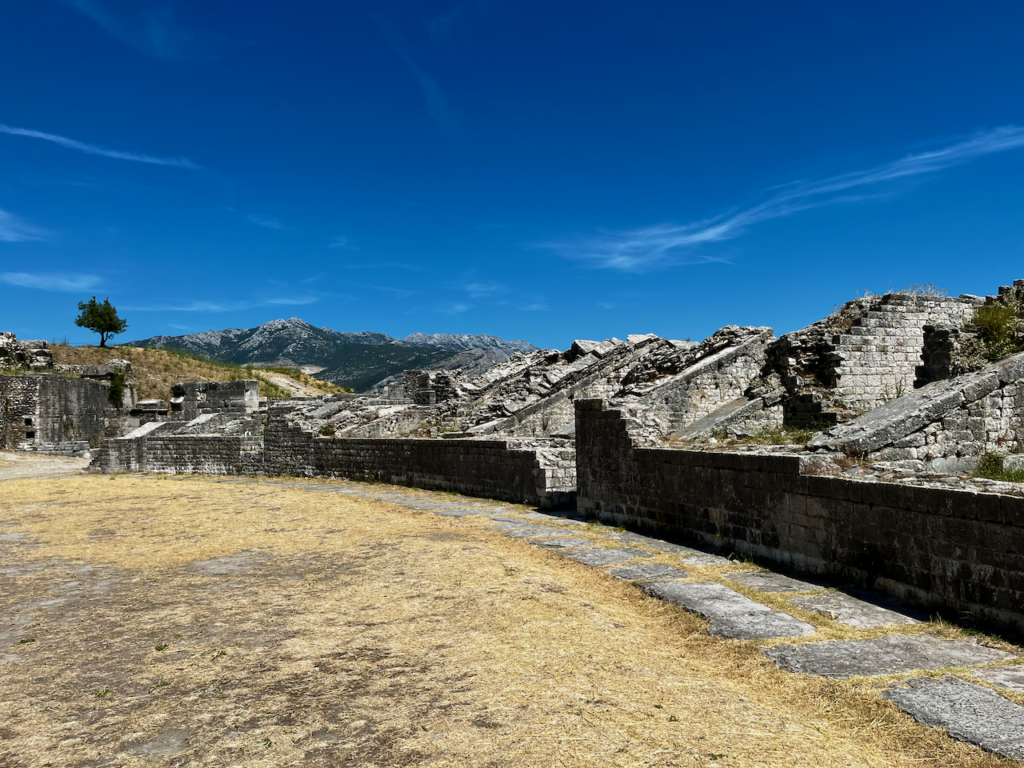
Once again, as a contrast, we offer you another photo by Carole Raddato. The perspective in this photo, with the mountains in the background, is particularly stunning.
To conclude, here a couple more images from the ruins of Salona.
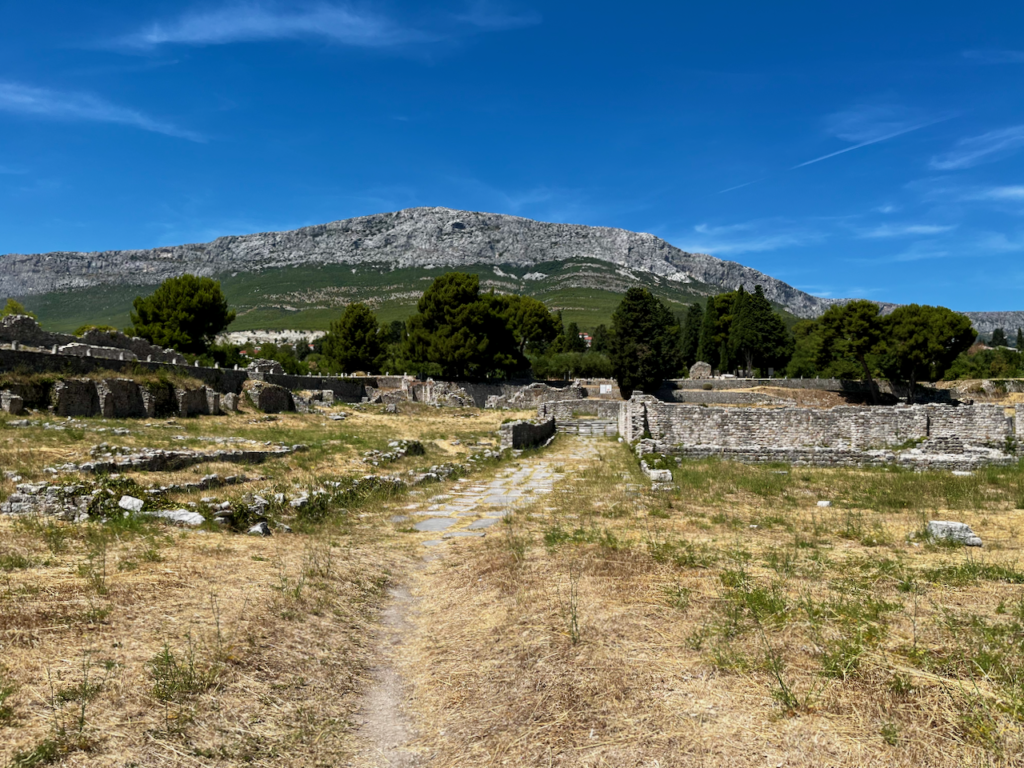
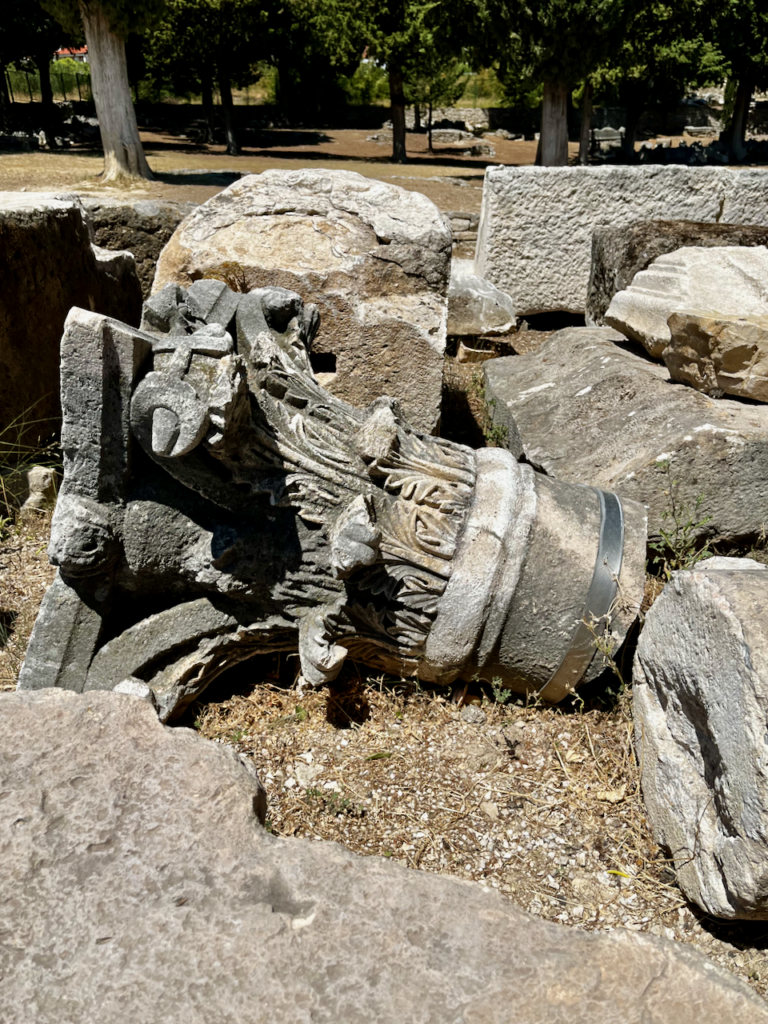
We look forward to sharing more with you soon.


